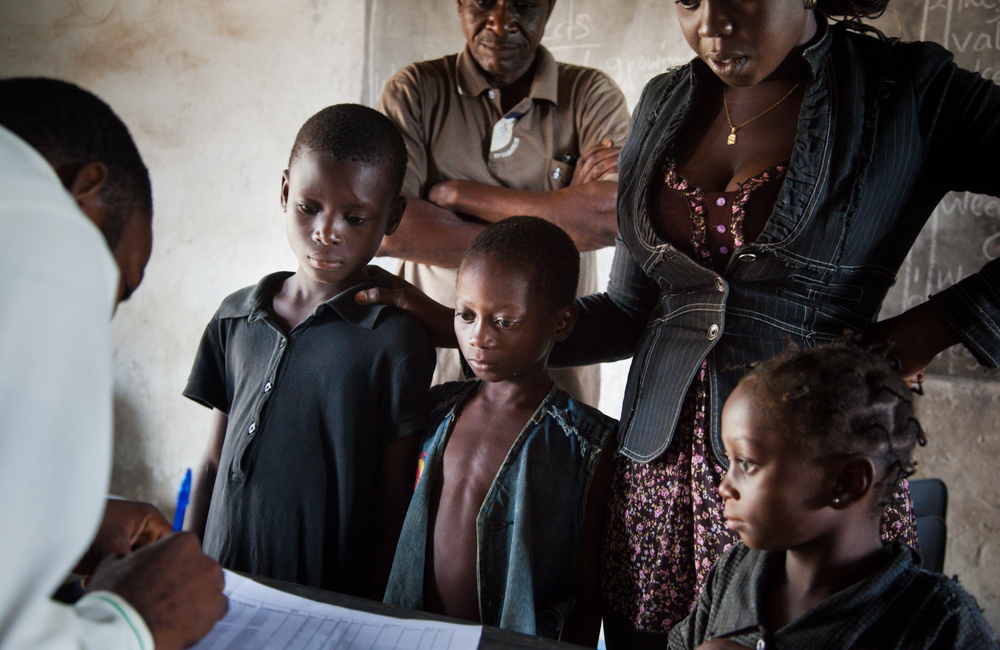
Asking a single question about maternal HIV status proved more effective in identifying older children living with HIV than more complex screening tools asking five or ten questions, a large study carried out in primary healthcare facilities in South Africa has found.
The major opportunity for diagnosing HIV acquired by vertical transmission in children comes soon after birth during the period of regular engagement with antenatal services. If HIV is not diagnosed in infancy and the child survives beyond early childhood, they may go for years without HIV testing unless they attend a healthcare facility where testing is offered.
In settings where HIV prevalence is high, it is not feasible to test all children for HIV in primary care services. Instead, researchers have developed screening tools to identify children who should be prioritised for testing.
Several screening tools for older children have been developed in various settings in sub-Saharan Africa to identify those who should be prioritised for testing. But these tools ask up to ten questions, making them time-consuming to deliver, or else identify a large number of children for screening who do not have the condition (low sensitivity).
South African researchers wanted to develop an easy-to-use screening tool that could be implemented in primary health care practices to prioritise children aged 5 to 14 years for HIV testing. They started with a ten-item screening tool and refined it to five questions, before refining it further and adding the site at which children presented for care and maternal HIV status as variables.
Evaluation of the screening tool took place in 14,147 children aged 5 to 14 years attending primary health care facilities with a caregiver in an urban district of Johannesburg (86%) and a rural district of Limpopo province (14%). The median age of participants was 7 years, 97% were being cared for by their biological mother and 55% were female. Thirty-eight percent had never been tested for HIV.
During the study, 14,082 children were tested for HIV and 62 tested positive (0.4%). Children who tested positive were more likely to have a mother living with HIV, to have someone other than their biological mother as eligible caregiver and to be tested in a rural clinic than the study population as a whole.
Researchers asked caregivers ten questions before HIV testing to establish the association between affirmative answers and HIV status. These were: Is a parent/sibling of the child HIV-positive? Has a parent/sibling died? Has the child been abandoned? Has the child ever been diagnosed with TB? Had the child had poor health in the past three months? Has the child ever been admitted to hospital? Is there low weight or poor weight gain? Is the child stunted or short for age? Has the child ever had an ear discharge? Does the child have recurring skin problems/skin rashes?
Most questions had a very low individual sensitivity, that is, the probability that an affirmative answer would have correctly identified a child with HIV. For example, a TB diagnosis had a 1.6% sensitivity, while poor health in the past 3 months had a 58% sensitivity. Answering ‘yes’ to the question ‘is the parent/sibling of the child HIV positive?’ had 85% sensitivity. Overall, answering yes to at least two items on the screening tool had a 72% sensitivity for identifying children with HIV. Referring for testing on the basis of this screening tool would have missed 17 of the 62 children diagnosed with HIV.
When the screening tool was reduced to five items (poor weight; stunting; child abandoned; poor health in the last three months; entry to care via a hospital or emergency room; maternal HIV status), two positive answers had a sensitivity of 82%. Referring for testing on the basis of this screening tool would have missed 11 of the 62 children diagnosed with HIV.
But when the screening tool was restricted to asking about maternal HIV status (positive or unknown), as distinct from asking if a parent or sibling was HIV positive, the sensitivity of a positive response improved to 95%. The specificity – the probability that negative responses correctly identified children who were HIV negative – was 65%. Referring for testing on the basis of this question would have missed three of the 62 children diagnosed with HIV.
Asking about unknown HIV status improved the sensitivity of the screening tool because it identifies mothers who remain untested, say the study investigators.
They say that for the South African setting, where approximately 160,000 children were estimated to be going without antiretroviral treatment in 2021, the single question is sufficiently sensitive and specific to be implemented widely in primary health care.
“Implementation should focus on integration into established workflows while ensuring patient privacy," write Jackie Dunlop and colleagues at the Anova Health Institute in Johannesburg. "For example, children could be screened while they await care, or whilst anthropometry or vitals are being conducted before consultation.”
Dunlop JL et al. A single question on maternal HIV status can improve identification of children living with HIV in South Africa. Pediatric Infectious Disease Journal, 42: 760-765, 2023.
DOI: 10.1097/INF.0000000000004007
Full image credit: Education As a Vaccine Aginst Aids (EVA) in Nigeria. Image by STARS/Kristian Buus. Image is for illustrative purposes only. Available at www.flickr.com/photos/starsfdn/8404283927 under a Creative Commons licence CC BY-NC-ND 2.0.
